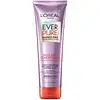What's inside
What's inside
 Key Ingredients
Key Ingredients

 Benefits
Benefits

 Concerns
Concerns

 Ingredients Side-by-side
Ingredients Side-by-side

Water
Skin ConditioningSodium Lauroyl Methyl Isethionate
CleansingSodium Cocoamphopropionate
CleansingCocamide Mipa
EmulsifyingSodium Lauroyl Sarcosinate
CleansingGlycol Distearate
EmollientDecyl Glucoside
CleansingPEG-150 Distearate
EmulsifyingPPG-5-Ceteth-20
EmulsifyingDimethicone
EmollientParfum
MaskingSodium Hydroxide
BufferingCitric Acid
BufferingPEG-55 Propylene Glycol Oleate
Propylene Glycol
HumectantTrisodium Ethylenediamine Disuccinate
Acrylates/Beheneth-25 Methacrylate Copolymer
Sodium Benzoate
MaskingAmodimethicone
Hydroxypropyl Guar Hydroxypropyltrimonium Chloride
Carbomer
Emulsion StabilisingTrideceth-10
CleansingBenzyl Salicylate
PerfumingBenzyl Alcohol
PerfumingLinalool
PerfumingPEG-100 Stearate
Magnesium Nitrate
Steareth-6
EmulsifyingPhenoxyethanol
PreservativeHexyl Cinnamal
PerfumingGeraniol
PerfumingAmyl Cinnamal
PerfumingCoumarin
PerfumingTrideceth-3
EmulsifyingCitronellol
PerfumingOrbignya Oleifera Seed Oil
EmollientTetrasodium EDTA
Acetic Acid
BufferingMethylchloroisothiazolinone
PreservativeMagnesium Chloride
Methylisothiazolinone
PreservativeWater, Sodium Lauroyl Methyl Isethionate, Sodium Cocoamphopropionate, Cocamide Mipa, Sodium Lauroyl Sarcosinate, Glycol Distearate, Decyl Glucoside, PEG-150 Distearate, PPG-5-Ceteth-20, Dimethicone, Parfum, Sodium Hydroxide, Citric Acid, PEG-55 Propylene Glycol Oleate, Propylene Glycol, Trisodium Ethylenediamine Disuccinate, Acrylates/Beheneth-25 Methacrylate Copolymer, Sodium Benzoate, Amodimethicone, Hydroxypropyl Guar Hydroxypropyltrimonium Chloride, Carbomer, Trideceth-10, Benzyl Salicylate, Benzyl Alcohol, Linalool, PEG-100 Stearate, Magnesium Nitrate, Steareth-6, Phenoxyethanol, Hexyl Cinnamal, Geraniol, Amyl Cinnamal, Coumarin, Trideceth-3, Citronellol, Orbignya Oleifera Seed Oil, Tetrasodium EDTA, Acetic Acid, Methylchloroisothiazolinone, Magnesium Chloride, Methylisothiazolinone
Water
Skin ConditioningCetearyl Alcohol
EmollientAmodimethicone
Behentrimonium Chloride
PreservativeCetyl Esters
EmollientParfum
MaskingIsopropyl Alcohol
SolventTrideceth-6
EmulsifyingPhenoxyethanol
PreservativeTocopheryl Acetate
AntioxidantEthylhexyl Salicylate
UV AbsorberCetrimonium Chloride
AntimicrobialHexyl Cinnamal
PerfumingHydroxycitronellal
PerfumingChlorhexidine Dihydrochloride
AntimicrobialSclerocarya Birrea Seed Oil
HumectantIsoeugenol
PerfumingHelianthus Annuus Seed Oil
EmollientRosmarinus Officinalis Leaf Extract
AntimicrobialTocopherol
AntioxidantWater, Cetearyl Alcohol, Amodimethicone, Behentrimonium Chloride, Cetyl Esters, Parfum, Isopropyl Alcohol, Trideceth-6, Phenoxyethanol, Tocopheryl Acetate, Ethylhexyl Salicylate, Cetrimonium Chloride, Hexyl Cinnamal, Hydroxycitronellal, Chlorhexidine Dihydrochloride, Sclerocarya Birrea Seed Oil, Isoeugenol, Helianthus Annuus Seed Oil, Rosmarinus Officinalis Leaf Extract, Tocopherol
 Reviews
Reviews

Ingredients Explained
These ingredients are found in both products.
Ingredients higher up in an ingredient list are typically present in a larger amount.
This water-soluble silicone is used for its hydrating and softening properties. It is used to add a silky feel to skincare products and has great benefits for haircare.
In haircare, this ingredient:
- Adds shine
- Protects color
- Offers thermal protection
- Boosts hair strength
- Does not build up as easily
Hexyl Cinnamal is a fragrance ingredient with a similar scent to jasmine. It can be naturally found in chamomile essential oil.
This ingredient is a known EU allergen and may sensitize the skin. The EU requires this ingredient to be listed separately on an ingredients list.
Hexyl Cinnamal is not water soluble but is soluble in oils.
Learn more about Hexyl CinnamalParfum is a catch-all term for an ingredient or more that is used to give a scent to products.
Also called "fragrance", this ingredient can be a blend of hundreds of chemicals or plant oils. This means every product with "fragrance" or "parfum" in the ingredients list is a different mixture.
For instance, Habanolide is a proprietary trade name for a specific aroma chemical. When used as a fragrance ingredient in cosmetics, most aroma chemicals fall under the broad labeling category of “FRAGRANCE” or “PARFUM” according to EU and US regulations.
The term 'parfum' or 'fragrance' is not regulated in many countries. In many cases, it is up to the brand to define this term.
For instance, many brands choose to label themselves as "fragrance-free" because they are not using synthetic fragrances. However, their products may still contain ingredients such as essential oils that are considered a fragrance by INCI standards.
One example is Calendula flower extract. Calendula is an essential oil that still imparts a scent or 'fragrance'.
Depending on the blend, the ingredients in the mixture can cause allergies and sensitivities on the skin. Some ingredients that are known EU allergens include linalool and citronellol.
Parfum can also be used to mask or cover an unpleasant scent.
The bottom line is: not all fragrances/parfum/ingredients are created equally. If you are worried about fragrances, we recommend taking a closer look at an ingredient. And of course, we always recommend speaking with a professional.
Learn more about ParfumPhenoxyethanol is a preservative that has germicide, antimicrobial, and aromatic properties. Studies show that phenoxyethanol can prevent microbial growth. By itself, it has a scent that is similar to that of a rose.
It's often used in formulations along with Caprylyl Glycol to preserve the shelf life of products.
Water. It's the most common cosmetic ingredient of all. You'll usually see it at the top of ingredient lists, meaning that it makes up the largest part of the product.
So why is it so popular? Water most often acts as a solvent - this means that it helps dissolve other ingredients into the formulation.
You'll also recognize water as that liquid we all need to stay alive. If you see this, drink a glass of water. Stay hydrated!
Learn more about Water